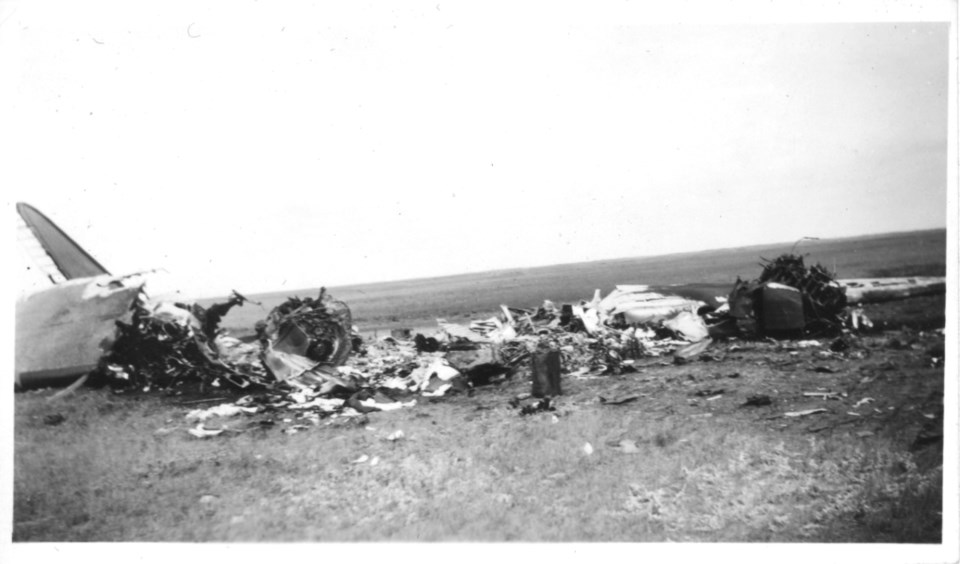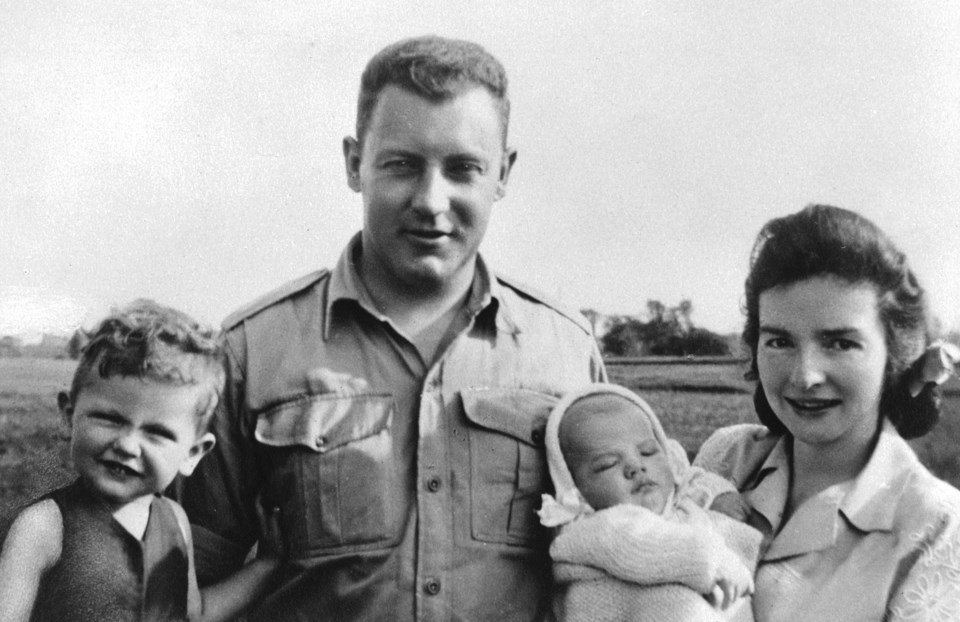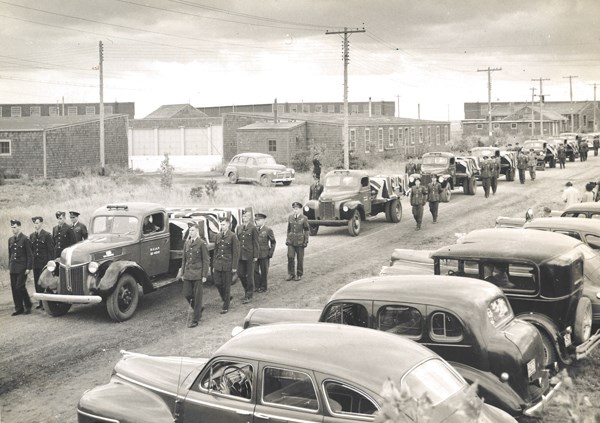Remembrance Day 2019
On a warm late summer morning in the post-war Prairies, a farmer watched as a military cargo plane flew low over a runway, near a ravine known by locals as “death valley.”
Its wheels had been lowered for the landing, but instead of skimming the runway, the bulky C-47 accelerated, as if to start another approach.
The plane “shot almost straight up, stalled, spun around once, and crashed to the ground.”
“It exploded with a loud roar,” reported the farmer. Smoke billowed from the wreckage and flames licked the skies.
All 21 men on board were killed in the crash.
The Royal Canadian Air Force (RCAF) Dakota 962 had been flying from Minot, N.D. on what was supposed to be a short routine mission to Estevan, Sask. Their task was to collect the Cornell aircraft that were being stored there and return them to the United States, which had loaned the planes to the Commonwealth during the Second World War.
What the farmer who witnessed the crash could not see was that an elevator control lock on the starboard wing that should have been removed during the pre-flight check, remained in place – this caused the pilot to lose control of the plane when he tried to gain altitude before attempting a second landing.
In a twist of irony, all of the victims, save for a lone aircraft mechanic, served as pilots during the Second World War, which had ended a year before. More than half were decorated combat veterans.

Within a day, news of the accident swept across Canada and to England, reaching the mother of the oldest pilot on board, 34-year-old Stephen Pond. After landing in Montreal, she rushed to Mount Royal Cemetery, arriving just in time to lay flowers on the casket of her only son.
The Sept. 15, 1946 crash remains one of the deadliest Air Force accidents in Canadian history, but time has blunted the force of the tragedy and descendants are still waiting for lasting public recognition that reflects the scale of the accident.
“These people were patriots who gave up their lives,” said Maria Pond, whose father-in-law was Stephen Pond. Now living in Sechelt, she like other relatives is perplexed by what appears to be a lack of formal recognition.
“I’d like the federal government to acknowledge that this tragedy did happen,” she told Coast Reporter.
While the victims are documented in the Canadian Virtual War Memorial, a registry of all Canadians who died in uniform since Confederation, and in the seven Books of Remembrance in the Peace Tower in Ottawa, no publicly funded memorials or exhibits commemorate the accident.
There is no exhibit or information about the crash at the National Air Force Museum of Canada, and according to writer and historian Marie Donais Calder, the same is true for the Saskatchewan Military Museum. “The military museum in our province had not even heard about the crash,” said Calder, who lives in Estevan. “There’s a little plaque at the Legion here in Estevan, and that’s it.”
Calder is working on a book about the tragedy, and is part of a small group who privately commissioned the carving of a monument that was recently installed as a permanent exhibit at the Estevan Regional Airport. In 2018, the province denied the city’s application for the monument to be situated at the courthouse near the cenotaph.
Over the years, families of the victims have come to Estevan in search of more information about the incident, “only to find there is nothing. And that’s heartbreaking,” said Calder. “There just doesn’t seem to be any steps taken whatsoever, outside our city council.”
Officials from the Royal Canadian Air Force base at 15 Wing Moose Jaw attend an annual commemorative ceremony in Estevan, and support the group, but the closest base to the site of the tragedy does not have a permanent acknowledgment, either.
Last July, several descendants of the crash victims travelled to Moose Jaw for the Saskatchewan Air Show, where the monument was displayed temporarily. Pond was among those who attended.
“We spoke with several young men … and they have never heard about this, even the older ones,” said Pond. “They didn’t know about this at all, and they’re in the Air Force in Moose Jaw.”
Pond said more awareness about the accident could serve as a reminder of the risks involved in military service.
“I would think that would help people who are in the Air Force now know that it was a human error that occurred and they should be careful,” said Pond. “It’s a very sad story.”

As the 75th anniversary of the crash approaches, Calder’s group has begun reaching out to provincial and federal governments “to help us bring this to the forefront.” She also hopes her book, which she expects to complete this year, will spread the word.
Some descendants have also begun contacting government and military officials. Jack Perry of Vernon, B.C. was two years old when his father, William Albert Perry, died in the crash. In September he wrote to Saskatchewan Premier Scott Moe and other officials.
Premier Moe responded in late October with a letter acknowledging the accident and forwarded it to MLA Lori Carr for consideration.
“I’m getting lot of favourable responses, but really I don’t think people know quite what to do,” said Perry, who admitted he is still developing his own ideas for what public recognition should look like. “I think it should definitely be in the military museums,” he said.
Perry does have his own artifacts. Years ago he travelled to the site, and found a dilapidated building of the farmer who witnessed the crash. He has newspaper clippings, photographs and items from the wreckage. “I offered them to the Trenton museum but I just never got much of a response,” he said. “I just think they deserve some type of memorial.”



